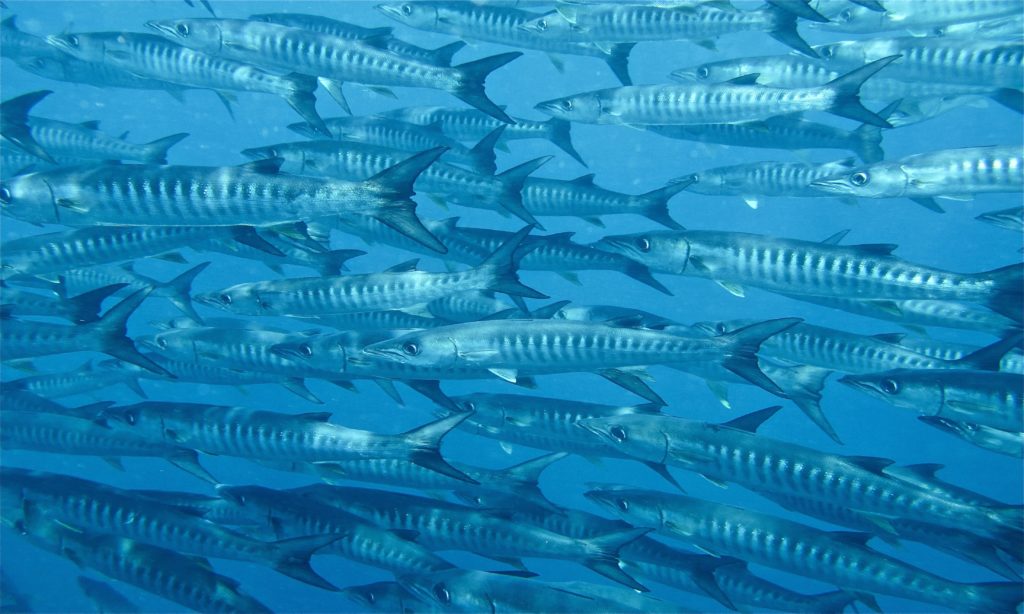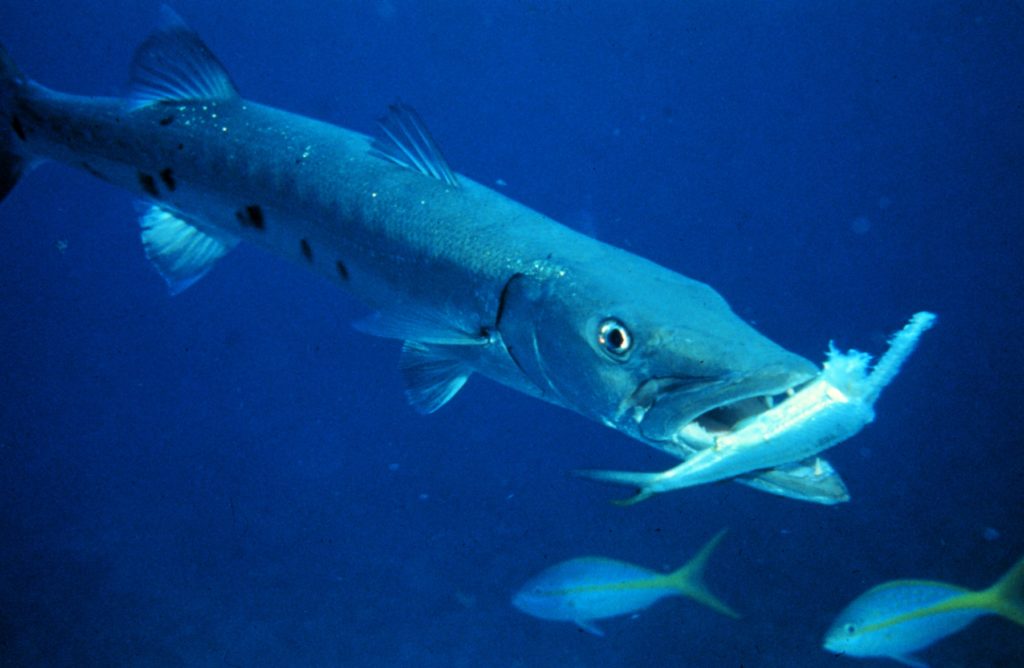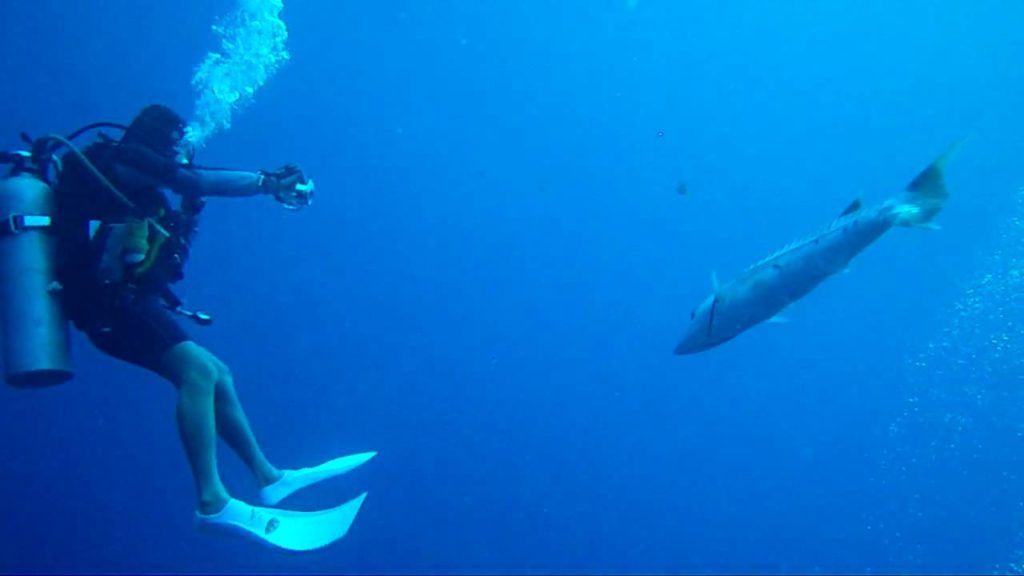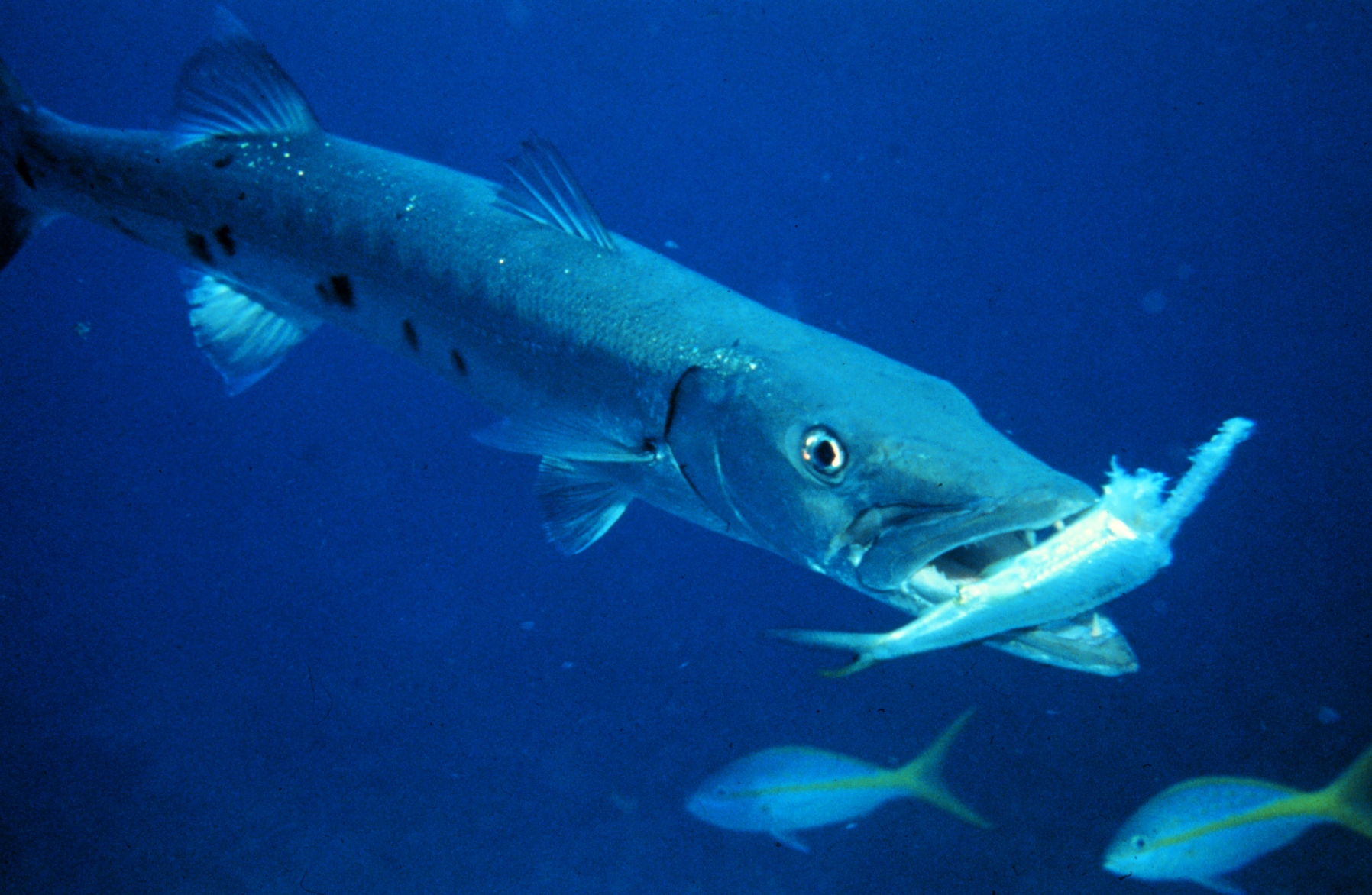Barracudas are a type of marine fish. They can be seen in many different parts of the ocean. Many people have heard about barracudas but not many people know a lot about them. That’s why we made this list of 29 weird and amazing facts about barracudas, to get you better acquainted with this awesome fish.
1. Barracudas vary widely in size, depending on what species they are. The largest barracudas species can reach length of 6 feet and can weigh up to 103 pounds.
2. The upper part of their body is covered in black, brown, grey and blue scales. Their bellies are always white, with random dark spots located on both sides of their body.
3. They have very sharp, almost dagger like teeth, which prevents their prey from getting away from them.
4. Their bodies are elongated with a pointed head. They have two dorsal fins and a tail fin that’s shaped like a fork.
5. A barracudas diet is made up of different types of fish such as, groupers, anchovies, mullets and snappers. However, they are also known to eat crustaceans and squids.
6. Anything shiny will attract a barracuda. Due to this attraction to shiny objects, they tend to hunt for fish with golden and silver scales.
7. Barracudas are known as an ambush predator, meaning that they will hide and wait for their prey to come before they attack. When there’s no place for them to hide, they will chase their prey down.

8. Humans tend to avoid barracudas while in the water because they’re known for being aggressive, often attacking divers unprovoked.
9. They are nocturnal, meaning that they are very active during the night and usually resting during the day.
10. Barracudas can swim at speeds of up to 25 miles per hour. This helps them hunt down prey and escape from larger predators.
11. While they sometimes gather in groups called “schools,” they are usually very solitary fish. However, since the group provides safety and facilitates hunting, even if they are solitary, they will come to a group for a much more successful cooperative hunt.
12. Even though it’s a feared sea predator, the barracuda often falls prey to killer whales and sharks; they are both bigger and sometimes faster than them.
13. The mating season for barracudas is in the spring. Males release sperm cells and females release eggs in the water where they combine to form fertilized eggs.
14. Female barracudas produce and release more than 1000 eggs, but, only a few of the eggs actually manage to survive into adulthood.
15. A barracudas age can be found by counting the rings on the scales and on the structure of their inner ear, called the otolith. The number of rings matches the age of that particular barracuda.
16. Barracudas are known to survive between 10 to 15 years in the wild.

17. They are able to inflate and deflate their swim bladder. This ability allows them to move up and down very quickly, making it possible for them to swim through regions in the coral reef that are narrow and seemingly impossible to swim through.
18. Young barracudas can change their color to camouflage with their surroundings. This makes it easier to catch prey by surprise and to hide from predators.
19. Younger barracudas like to hang around coral reefs, mangroves and seagrass as it’s easier for them to hide there.
20. You can get ciguatera poisoning from eating a barracuda. This is caused by ciguatoxins that are bio accumulated in the tissues of a large fish found in the tropical seas.
21. Barracudas are known as the “Tigers of the Sea,” due to their aggressive presence and sharp, pointed teeth.
22. Unlike many other fish that rely on their sense of smell to find food, barracudas use their sight to look for prey.
23. They don’t have eyelids and they move very slowly when they’re sleeping.

24. Barracudas are cannibalistic and will actively feed on young barracudas.
25. There isn’t any obvious way to tell if a barracuda is male or female.
26. While a group of barracudas is called a “school”, a group of adult barracudas is called a “battery.”
27. When a predator attacks a school of barracudas, the school will form a “tornado” which confuses the predator and prevents it on focusing on any one barracuda.
28. For humans, barracudas are a very popular food and game fish. They are most often eaten as fillets or steaks.
29. West Africans smoke barracudas that they catch and use them for soups and sauces. Smoking protects the soft flesh of the fish from disintegration in the broth while giving it a smoky flavor.




